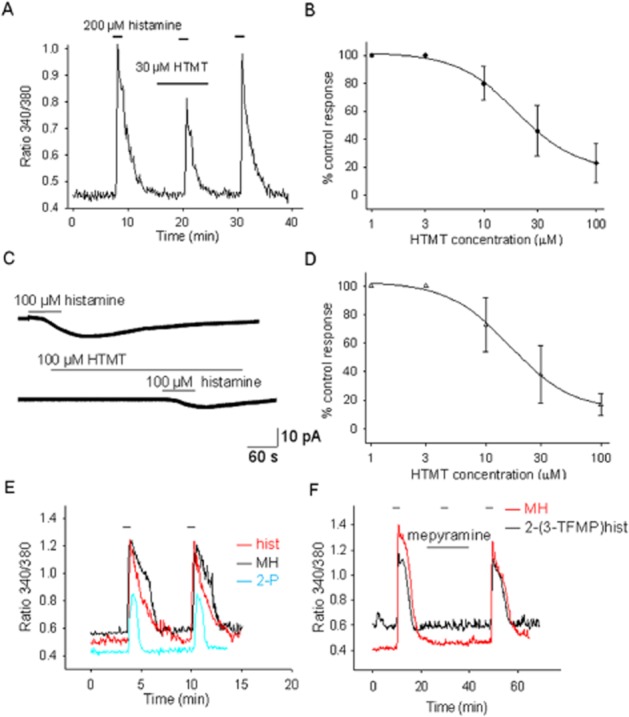Figure 4.

HTMT does not have agonist activity at the H1 receptors expressed in mouse PO/AH neurons but antagonizes histamine effects. (A) [Ca]i responses to histamine (100 μM) before during and after HTMT (30 μM) incubation. The trace represents the average of the responses from five cultured PO/AH neurons. Note that HTMT does not elicit an increase of [Ca]i but decreases the histamine effect. (B) Concentration–response curve for the antagonist activity of HTMT on the [Ca]i responses to histamine (100 μM). Each point represents the average of data collected from 20 different PO/AH neurons. The data were fitted with a logistic function. The fit yielded an IC50 of 19 μM. (C) Inward current activated by histamine (100 μM) before and during HTMT (100 μM) incubation recorded in a cultured PO/AH neurons. HTMT does not activate inward current but decreases the histamine effect. The holding potential was −50 mV. (D) Concentration–response curve for the antagonist activity of HTMT on the inward current activated by histamine (100 μM). Each point represents the average of data collected from six different PO/AH neurons. The data were fitted with a logistic function. The fit yielded an IC50 of 16 μM. (E) Short incubations (40 s) with histamine or H1 receptor agonists do not induce long lasting desensitization. The traces are responses from individual cells and are representative of the average response of PO/AH neurons. (F) Mepyramine (0.1 μM) blocks the responses activated by methylhistaprodifen (MH; 100 μM) and 2-(3-TFMP) histamine (100 μM). The traces are representative responses of individual PO/AH neurons. (E, F) Response was recorded from PO/AH cultures from C57/Bl6 mice. (A–F) TTX (1 μM), CNQX (20 μM), AP-5 (50 μM) and bicuculline (20 μM) were present in the extracellular solution.
